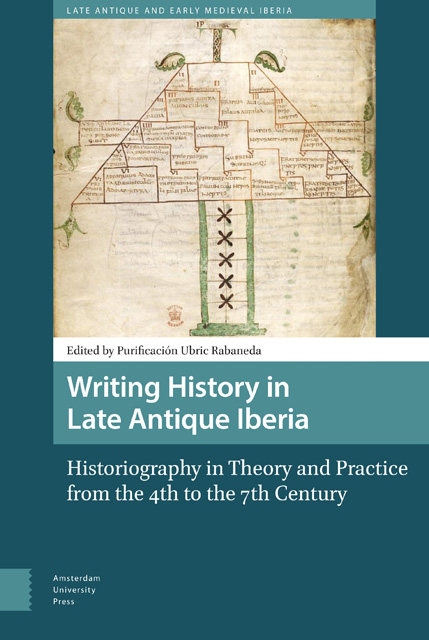 Writing History in Late Antique Iberia
Writing History in Late Antique Iberia Published online by Cambridge University Press: 18 April 2023
Abstract
In the Visigothic Kingdom of Toledo, there are three ways of talking about the past: the chronicles, the lives of illustrious men, and national histories. The objective of this contribution is to make a journey through the period, which begins with the chronicler John of Biclar and ends with the historian Julian of Toledo, to verify the marked influence that the political context exerts on the contents of the works of these authors. In addition, and above all, such historical discourses contribute to the strengthening of this new political reality, appreciating a growing commitment on the part of those prelates who write about a past closer and closer to the present.
Keywords: chronicles, lives of illustrious men, national histories, Visigothic policy
[…] pero, después que el príncipe Sisebuto tomó el cetro del reino, alcanzaron tan alto grado de esplendor que llegan con la presencia de sus armas no sólo a las tierras, sino al propio mar, y el soldado romano, sometido, les sirve y ve que les sirven tantos pueblos y la propia España.
Isidoro de Sevilla, Historia de los Godos
Introducción. Historiografía tardoantigua y reino hispano-visigodo
Se tiene cierta tendencia a establecer una clara línea divisoria entre la historiografía del Mundo Clásico y la elaborada durante la Antigüedad Tardía, por responder la génesis de esta última a una matriz de signo netamente cristiano. Una observación más atenta de los escritos históricos tardoantiguos descubre que, más bien al contrario, el panorama no es tan contrapuesto como en principio se suele dar por sentado. Con rapidez se advierte que existe una reconocible continuidad en su tipología, algo que no es contradictorio con la incorporación de los recursos necesarios para su inserción dentro de un nuevo universo religioso, cultural y por extensión también político, articulado en torno al cristianismo, la nueva religión triunfante. Al igual que ocurría en la historiografía grecorromana, el perfil de quienes elaboran los textos históricos sigue siendo el de personajes ubicados en la primera línea de la actividad pública, protagonistas directos o indirectos de los acontecimientos más relevantes, y la finalidad de su escritura resulta del entrecruzamiento de vectores dispares, como son, entre otros, la declarada intencionalidad ejemplarizante, abiertamente teñida de contenido apologético, y una innegable dimensión política, no siempre evidente a primera vista.
To save this book to your Kindle, first ensure [email protected] is added to your Approved Personal Document E-mail List under your Personal Document Settings on the Manage Your Content and Devices page of your Amazon account. Then enter the ‘name’ part of your Kindle email address below. Find out more about saving to your Kindle.
Note you can select to save to either the @free.kindle.com or @kindle.com variations. ‘@free.kindle.com’ emails are free but can only be saved to your device when it is connected to wi-fi. ‘@kindle.com’ emails can be delivered even when you are not connected to wi-fi, but note that service fees apply.
Find out more about the Kindle Personal Document Service.
To save content items to your account, please confirm that you agree to abide by our usage policies. If this is the first time you use this feature, you will be asked to authorise Cambridge Core to connect with your account. Find out more about saving content to Dropbox.
To save content items to your account, please confirm that you agree to abide by our usage policies. If this is the first time you use this feature, you will be asked to authorise Cambridge Core to connect with your account. Find out more about saving content to Google Drive.